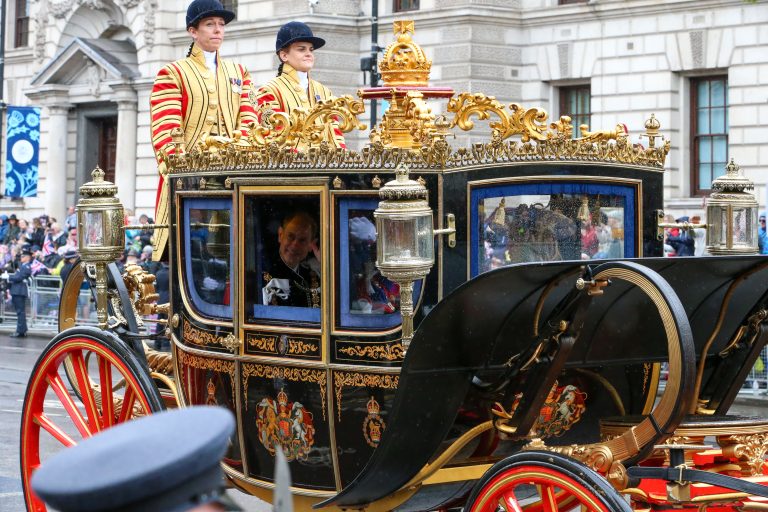
Dublin is a city rich with history, myth, and legend. It boasts ancient manuscripts, medieval castles, and relics of saints that draw in pilgrims and history enthusiasts alike. But perhaps the most unusual treasure it holds is the heart of Saint Valentine, the patron saint of love, resting within the walls of Whitefriar Street Church.
How did the sacred heart of a Roman martyr find its way to Ireland? Why Dublin, of all places? And what does it mean for the city, which now holds a piece of the most romantic legend in history?
Let’s unravel the journey of St. Valentine’s heart, its significance, and the mysteries surrounding his life and legacy.
Why is St. Valentine’s Heart in Dublin?
In 1835, the relics of Saint Valentine were gifted to Father John Spratt, a well-respected Irish Carmelite priest. The story goes that Spratt, a famed preacher, had impressed Pope Gregory XVI while visiting Rome. So much so that, as a token of appreciation, the Pope granted him a remarkable gift—the remains of Saint Valentine, contained within a small wooden casket, including his heart.
Upon returning to Dublin, Father Spratt placed the relics in Whitefriar Street Church, where they remain to this day. Every year, especially on February 14th, couples and love-struck pilgrims flock to the church to pray before the shrine, seeking blessings for their relationships or future love.
But who was Saint Valentine? And how did he become the global symbol of love?
The Origins of Saint Valentine and Valentine’s Day
Where Did Valentine’s Day Come from in Ireland?
Though Ireland didn’t invent Valentine’s Day, it has become an unexpected keeper of its legend thanks to the relics in Dublin.
How Did St. Valentine’s Day Originate?
The origins of Valentine’s Day are murky, but the most popular story traces it back to 3rd-century Rome. Emperor Claudius II, believing that unmarried men made better soldiers, banned young men from getting married. But a Christian priest named Valentine defied the decree, secretly performing weddings for young lovers.
His defiance led to his arrest and execution on February 14, 269 AD. According to legend, before he died, Valentine wrote a final note to a jailer’s daughter, signing it “From Your Valentine”, giving rise to the most iconic phrase of love.
5 Facts About St. Valentine
- Multiple Saint Valentines Exist – The Catholic Church recognizes at least three different Saint Valentines, making the true origin a mystery.
- He Was Beheaded – Valentine was martyred by Emperor Claudius II for his defiance of Roman law.
- He’s Not Just for Lovers – He’s also the patron saint of beekeepers, epilepsy, and travelers.
- His Heart is in Dublin, but His Body is Elsewhere – Other relics of St. Valentine are believed to be in Italy, France, and Poland.
- Valentine’s Day Has Pagan Roots – The holiday may have evolved from Lupercalia, an ancient Roman festival celebrating fertility.
Is St. Valentine Buried in Dublin?
While his heart is in Dublin, St. Valentine’s body is believed to rest in Rome, at the Church of San Valentino. However, various relics attributed to him are scattered across Europe, leading to debates about their authenticity.
How Did the Heart Become a Symbol for Valentine’s Day?
The symbol of the heart as an emblem of love dates back centuries. Some believe it originated from the shape of the Silphium plant, an ancient herb used as a contraceptive and aphrodisiac in Roman times. Others tie it to medieval medical theories, which claimed the heart was the center of all emotions.
The association between the heart and love grew stronger in medieval times, cemented by poets, artists, and the rise of romantic chivalry. By the 18th and 19th centuries, the heart became the dominant symbol of Valentine’s Day.
When Was St. Valentine Born?
No one knows exactly when St. Valentine was born, but most historians agree he lived in the late 2nd or early 3rd century AD, likely being executed around 269 AD.
Where is the Oldest Grave in Ireland?
The oldest known burial site in Ireland is Newgrange, a Neolithic passage tomb dating back over 5,000 years, making it older than the Egyptian pyramids. Other significant sites include the Hill of Tara, the legendary resting place of the High Kings of Ireland.
What Saint is Buried in Ireland?
Aside from St. Valentine’s heart, Ireland is home to the final resting places of many revered saints, including:
- Saint Patrick – Buried in Downpatrick, Northern Ireland.
- Saint Brigid – Buried in Kildare.
- Saint Columba – Buried on the island of Iona, Scotland, though he was of Irish origin.
The Romantic Legacy of St. Valentine’s Heart in Dublin
Dublin’s connection to Valentine’s Day is unexpected yet powerful. While most people associate the holiday with chocolates and flowers, Ireland holds a piece of the man who inspired it all.
For couples seeking blessings, inspiration, or a deeper connection to the holiday, a visit to Whitefriar Street Church offers something truly unique. Whether you’re praying for love, celebrating an anniversary, or simply appreciating the mystery of history, Dublin remains one of the most romantic places in the world—not just because of its charming streets, but because it holds the heart of the patron saint of love himself.
Explore More of Ireland’s Hidden History
- Ireland’s Ancient East: Where Myths, Legends, and History Collide
- Hidden Gems of Ireland’s Ancient East You Need to Visit
- Slane Village: The Jewel in Ireland’s Ancient East
Final Thoughts: Love, Faith, and a Heart That Traveled the World
Ireland’s role in preserving St. Valentine’s relics is a story of faith, devotion, and unexpected history. His heart, entombed in a small casket in Whitefriar Street Church, has made Dublin a pilgrimage site for romantics worldwide.
As you walk through the city’s cobbled streets, past Trinity College, Dublin Castle, and St. Patrick’s Cathedral, remember that love itself has a home here—not just in poetry and music, but in the relics of the saint who died for it.




